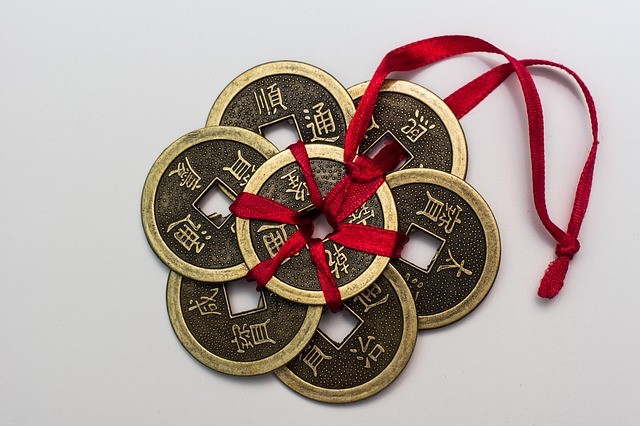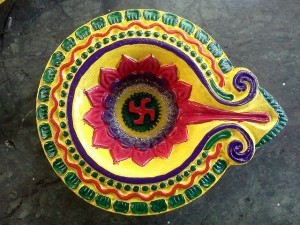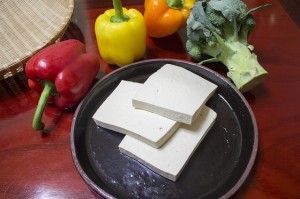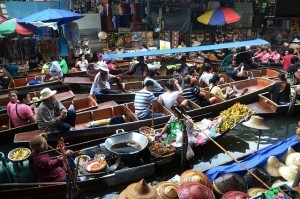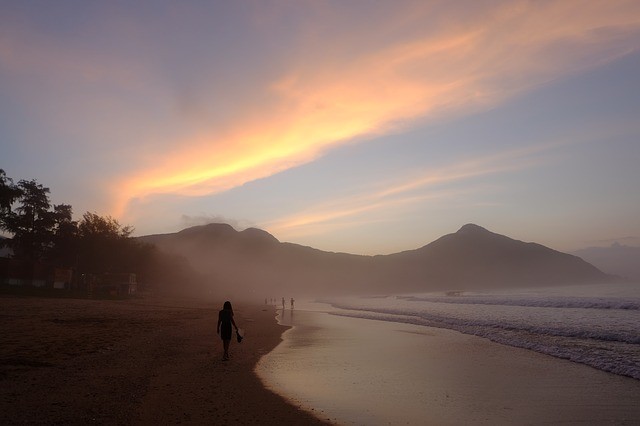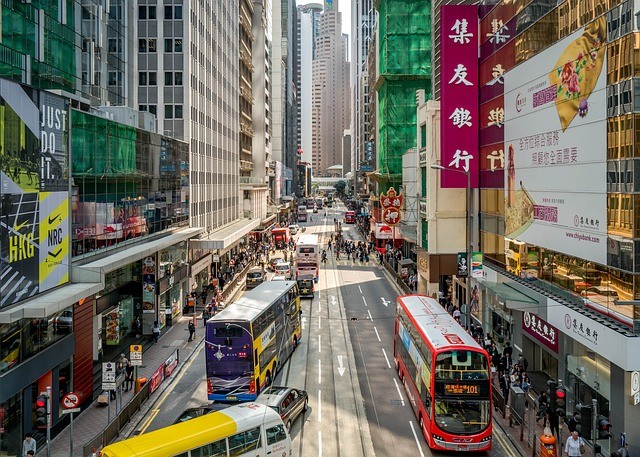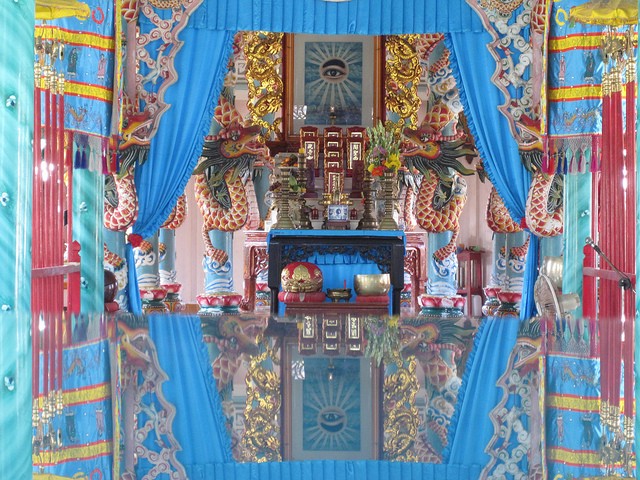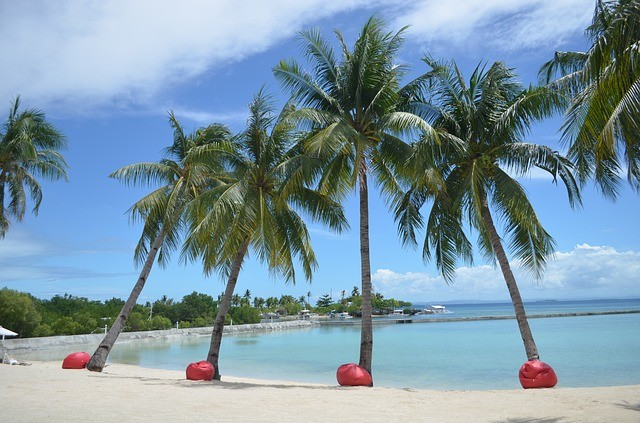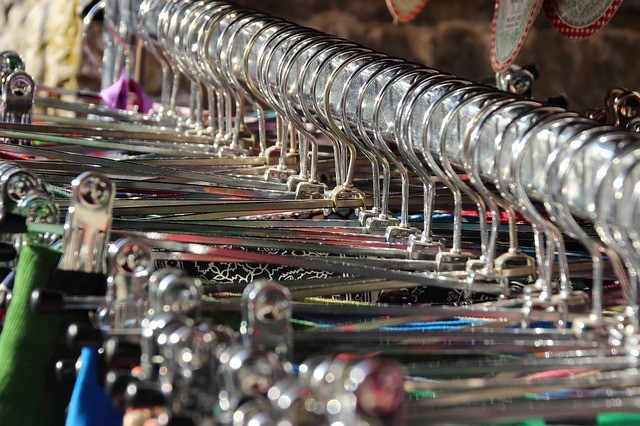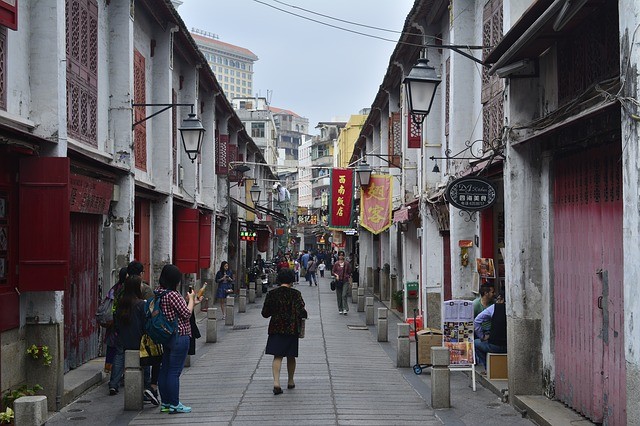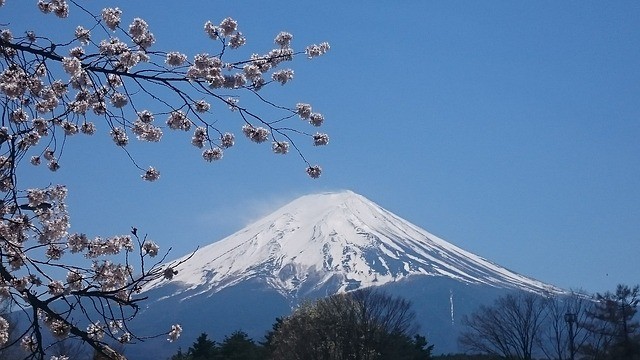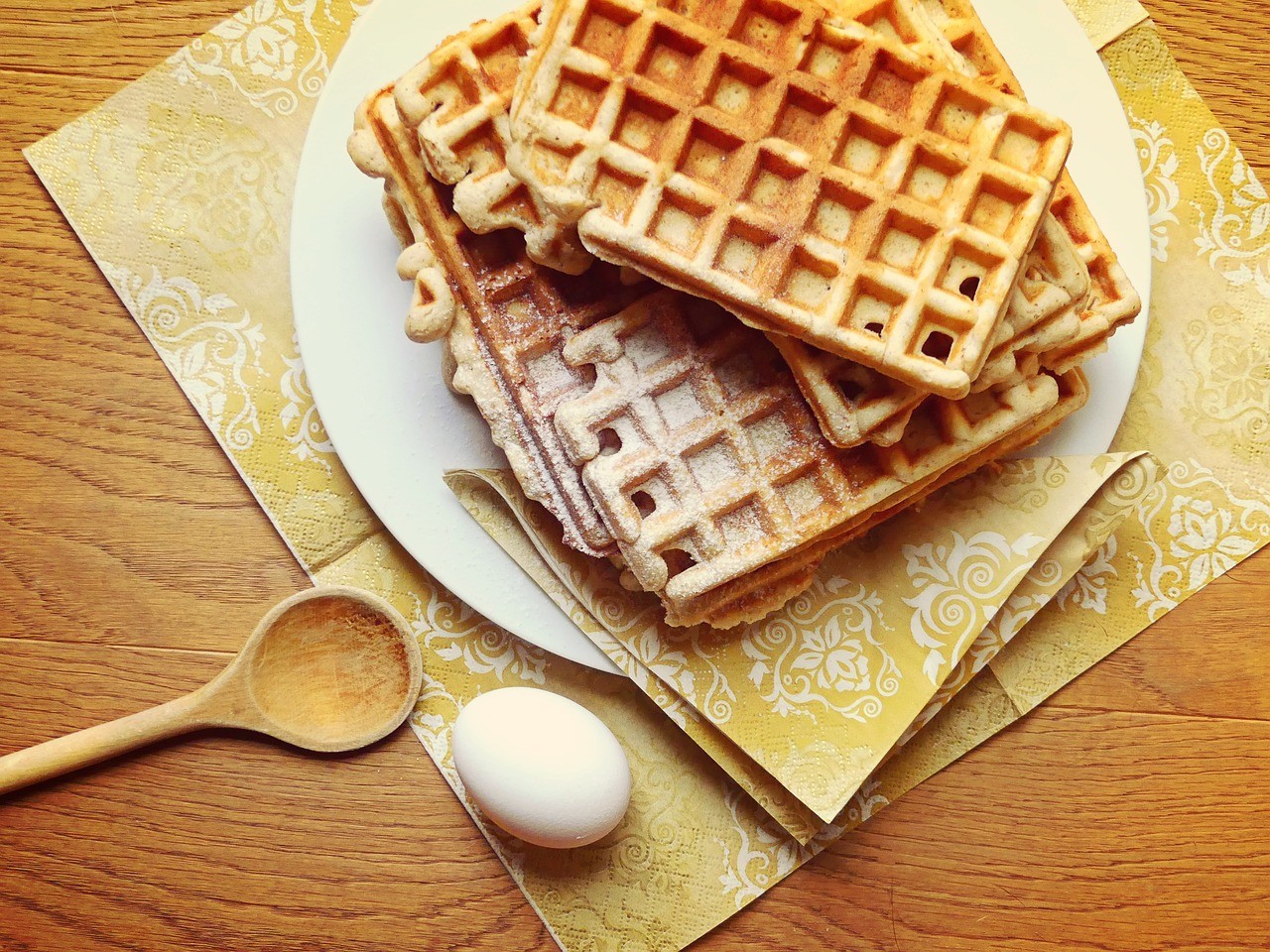Hong Kong does not necessarily have to be all city slickers and high-end living. It is in fact a great city to explore with your children. Here is The Expat's rapid-fire guide of some of the best things to do in the great outdoors with the family.
Hong Kong Disneyland Resort.
Disneyland is probably pretty high up on most children's bucket list of 'things to do before I'm 14'! And a trip to the Hong Kong resort will not disappoint. The park has hotels set within the grounds of the vast complex for the ultimate experience (and expense), or tickets are available to visit as a day guest. The resort is divided up into seven zones that offer different themes and experiences. We have put together a comprehensive guide to visiting Disneyland, you can read more about the park here
Thanks to the huge Indian population in Singapore, there are numerous ways that you can celebrate the Festival of Light in the city. So if you want to celebrate this Indian tradition (it falls on 14th November this year), head on down to Little India and take part in some of the fun.
Enjoy the lights
Simply taking a walk along the streets of Little India is enough to see some beautiful displays of lights. The real focal point are the peacocks at the beginning of Serangoon Road, and if you want to see the lights at their best, hang around until 7pm when the sun goes down and the whole street becomes electrified. The lights will be on until midnight and will last for a little longer than the five days of the festival of light.
Enjoy some authentic Indian food
The Song Of India is offering a special menu for Diwali and you will be able to see why they have earned a Michelin star. The tasting menu has four courses, including an ‘art palette’ that has seven different tastings. If that is out of your budget, then head to any of the Indian restaurants that dot the streets in Little India for some deliciously authentic food.
Eat sweets until you feel sick
Indian sweets are addictive, sticky and sugary and once you start, you won’t be able to stop. Head over to Punjab Grill at Marina Bay Sands to buy their special Diwali sweet boxes. Look out for mango with white chocolate as well as green tea and pistachio. They also have plenty of dates and figs to celebrate without going into a sugar coma.
Hong Kong has more than it’s fair share of weird food items, found in food stalls, restaurants or even in your local supermarket. Not sure what to try first? Here is our definitive list of the best!
Bird Nest Soup
This is one of the most expensive delicacies you can find on the island and also, one of the strangest. Made from the solidified saliva of the male Swiflet bird, the soup (apparently) has a high nutritional value, as well as being extremely well sought after for it’s exclusivity. It can be prepared as a sweet or savoury dish, and will normally be served alone, so as not to ruin the flavour. The whitest nests are the purest and most expensive, and once cooked, will become gelatinous. They can be bought in specialty shops for around HKD $150-500 per gram. You can also try it here at: Tin Ngai Kam Bird Nest Place, 210 Shanghai Street, Yau Ma Tei, $238 for a small portion. Shang Palace, inside the Shangri-La Hotel, $680-720 per person.
Stinky tofu
If normal tofu doesn’t float your boat, then why not try stinky tofu? This is an extremely popular street food and can be found almost anywhere. Originating from mainland China but making it’s mark in Hong Kong and in Taiwan, stinky tofu is made from a fermented brine which itself comes from fermented vegetables, meat, and seafood. The tofu is then immersed in this brine and is then deep fried and served with hoisin sauce. It does not smell great and you might regret it, but make sure you try this street food snack at least once.
Century egg
Often topping lists of ‘most disgusting food in the world’, the century egg is not for the faint-hearted. Century eggs are also known as ‘one hundred year egg’ or ‘thousand year egg’ and is usually a duck, chicken or quail egg that has been preserved in a mixture of clay, ash, quicklime and ricehulls. If you don’t know the ingredients, all you need to know is that when they are mixed, it smells rather like urine. The eggs are usually served in congee, or with garlic, chili and vinegar. You can even find century eggs in local supermarkets, tinned or served in an egg box. If you need more encouragement, century eggs are supposed to be the best hangover cure.
It might seem strange to haggle for people from western cultures, but having some haggle skills is essential for shopping in many places around Asia. The fun part is that you can negotiate for almost anything, including hotel rooms, clothes to taxi rides. You might feel uncomfortable at first, but once you master the art, it will be a skill to serve you for life. Here are some tips for haggling effectively.
Shop around first
By getting an idea of some of the prices on offer, you will be better informed about what to offer. It will also give you a bargaining tool if you know a nearby shop is offering the same item for less. Try to avoid buying what you want in the first shop you go to, as you will probably find what you are looking for in several others. In the same breath, avoid buying at the more tourist facing markets and malls as sellers have an eye for a profitable opportunity! Many of these places have had their prices inflated for tourist traffic and as so many tourists have just paid the first price they were offered, haggling in these environments has becomes defunct.
Arrive early
Sellers and market traders are more likely to offer good prices if you are the first sale of the morning. This is considered to be the lucky sale and it is more probable that you will get your goods for less. The same goes for night markets, so try to arrive as the trader is setting up for the night.
Be friendly
Try not to confuse teasing with offense, and act shocked when the vendor tells you the first price. Be open and view it as a friendly interaction. The more you joke around but hold firm on your price, the more likely it is that the vendor will warm to you and offer the price that you are asking for.
Act disinterested
Even if the item is something that you really want, try to act like you could live without it. Pointing out flaws and marks is also part of the game and will not offend the vendor. They fully understand that you can find the same item elsewhere so they will try to close the sale as quickly as possible.
Travelling to far-flung destinations can be exciting or daunting, depending on your frame of mind. But one thing is for sure, taking a little time to plan can make all the difference once the novelty wears off and the boredom sets in...
First of all, what a long-haul flight is requires some definition; technically, it is any flight that is over four hours, however, just to add to matters, it then falls into two different categories; medium long haul and ultra-long haul, the latter being a flight over eight hours. For example, a flight from London to Hong Kong totals around twelve hours making it ultra-long-haul. But it is not just the length of the actual flight that needs to be planned for, there is the journey to the airport, check in, security, boarding, immigration checks at your destination, reclaiming baggage and then your transfer to your final destination all adding hours to your total door to door time. We’ve put together some of our best tips to help you survive your long-haul trip!
Be kind to yourself. Reducing your stress levels the day before your trip can make a huge difference to your experience on the big day. Make sure you plan ahead and get everything ready in plenty of time to avoid those last-minute panics that stress everybody out; make sure you have located and checked all your documents in good time, why not treat yourself to a nice folder to keep your tickets, passports, visa information, insurance, emergency contact numbers, your travel itinerary and other relevant articles in. Then the day before you travel you will be able to do pleasant activities that relax you; don’t pull a 12-hour shift and leave your packing until the small hours of the morning.
Hand luggage and essentials ‘flight pack’.
Well thought out hand luggage can be a real gamechanger on a long-haul flight. Having the right items within easy reach can reduce stress and add to your comfort. Make sure you pack some extra layers of clothes to wear; cabin climate control can sometimes be on the chilly side and having spare clothes, or at least fresh underwear, to change into when you arrive will help you feel less dishevelled. Packing a little bag with essentials such as, comfort eye drops, toothbrush and toothpaste, tissues, flight stockings, painkillers, ear plugs, an eye mask, a small mirror, some make up, small pack of ‘freshen up’ wipes, hand cream, and antibacterial hand gel can go a long way to make your journey more comfortable, just pop it on top and everything will be within easy reach. Don’t forget to pack headphones, your phone, iPad or android tablet, (even in ‘flight mode’ these can help while away the hours). Don’t forget to install apps such as FlightAware which gives you updates on airport delays and flight delays, it can be set to send you notifications, weather updates, and maps your journey so you can see the route you will be taking. Being able to reduce boredom, stress, and anxiety is really useful, try using apps that use meditation techniques such as Calm, The Mindfulness App, Headspace, and Omvana are particularly useful when you're trying to sleep but find yourself distracted by noise, other people, or just the general goings on, alternatively, listen to music on Spotify, Google Play Music, or Apple Music apps to dull the drone of the plane engines. Downloading the kindle app on your phone or tablet means you can have a wide choice of reading material without adding bulk, or weight, to your hand luggage. Always download a few movies that you love because sometimes you just want to be brain dead and not have to follow a plot that requires any concentration, the movies may not be to your taste, and airplane screens can dry your eyes (hence the comfort eye drops in your essentials pack).
Lying just north of Hong Kong is one of the most rapidly expanding cities in China, Shenzhen. Whilst it may look industrial to any outsider, the city has some hidden corners that are worth visiting. With the city being only a stone’s throw from Hong Kong, let’s see what it can offer to any intrepid tourist.
Shenzhen Book City
Whilst not exactly being off the beaten track and being rammed with tourists as well as locals at any given time, Shenzhen has the largest bookstore in China. Book City stocks well over three million books and it is also home to a number of writers' groups. Perfect for whiling away an afternoon away from the bustle of the city, the book stacks may be just what you need.
Window of the World
Again, this is another tourist attraction that draws crowds from all over but it has been included on this list simply for it’s weird factor. Window of the World is a park entirely dedicated to the replica of famous sights. Next door, you can also find ‘Splendid China Folk Cultures Village’ which is dedicated to Chinese folklore and traditions. Not quite as famous as it’s neighbour, it is worth a visit merely to see how much of the slightly more controversial customs have been whitewashed.
Chiwan Old Fort
You would be forgiven for thinking that Shenzhen does not have a lot of history, considering it is less than a century old but you would be wrong. Notoriously difficult to find, but a curious insight into Shenzhen’s roots, the fort was built to protect the Pearl River from the British by the Qing dynasty at the time. You can still see the cannon, as well as several interesting artefacts related to the Opium Wars.
Na’Nao Hakka
This really is a two for one, as the location of this little Haka village is also home to one of the best beaches in Shenzhen. Hakka is a minority ethnic culture within China, with its own customs and dialect, and Na’Nao village is a perfect place to not only get to know the culture better but to escape the city. This area is largely undeveloped, and the beach here is quite quaint. There is also an excellent seafood market where you can buy some snacks for the day. If you are staying in Shenzhen for longer than a weekend, make Na’Nao a must see.
Hong Kong is frequently voted one of the best places to live and work as an expat. Despite cries that it is not the same experience as it once was, there is no doubt that positions in Hong Kong are highly sought after. So let’s take a closer look at why that is.
The city itself
Like other big cities of it’s kind, Hong Kong is a megalopolis that has more than enough to offer to expat workers. However, it has a unique flavor that is hard to replicate elsewhere. The clash of cultures and influences make for a mix that is one of a kind. Chinese and Western styles mix, melt and then reproduce themselves in the most spectacular of ways. Besides that, Hong Kong has five star hotels, Michelin starred restaurants, street markets and food stalls within spitting distance of one another. This is Hong Kong’s unique draw and it has been a large part of the attraction for expats over the years.
The burst bubble
Fast forward to now and many are claiming that Hong Kong’s bubble has well and truly burst. The competition for posts, due to the enormous desire to work in Hong Kong and what it can offer, has meant it has become quite difficult to find a position. Couple that with often unbearable levels of pollution and rising costs of living, all of which equate to Hong Kong slipping down the scale in recent years. However, for those that do manage to secure a position, they can still enjoy a remarkably safe and accessible city.
Finding the right position
Hong Kong is home to a vast amount of offices, including international businesses. All of these need expat workers in droves. Finance has typically been the big pull for people working in Hong Kong and for this reason, when the global economic crisis hit, it hit hard in Hong Kong. Whilst the area may not have suffered along the same lines of other financial hubs, the positions available are not quite what they were. A reduction of posts is only one factor. Expat packages are also less lucrative, with many benefits and bonuses being drastically reduced. Previously, an expat worker could expect free schooling, medical insurance, housing and transport alongside their salary. However, many now claim this has become ancient history. Whilst packages feature many rewards, these are not quite as comprehensive as before.
Moving forwards
It is not all bad news though. There are still many positions available to expats and the government is investing heavily in financial technology. For people working in this sphere, the sky can well be the limit. Consultants are still in demand, as well as law professionals, communications experts and human resources experts. For those people working in such fields, there should still be a healthy competition but greater opportunities of access.
Vietnam and Cambodia have shaken off their past and are now emerging as two of the hot holiday destinations of the East. Apart from bustling cities, great people, and delicious food, there are many temples that give you an insight into the history and culture of these two countries. Here is a list of the best!
Tran Quoc Pagoda, Vietnam
This is the oldest in Hanoi and is a perfect example of Buddhism in Vietnam. The temple has eleven levels, and a beautiful courtyard where you can burn incense. There is also a museum of relics related to the temple. Tran Quoc is also one of the temples of Vietnam that displays stunning carved statues. These are from the 17th century and each one is unique. The river surrounding the temple is also incredibly peaceful. This temple is one of the most famous temples in Vietnam for it’s status among the elite and show it shows it’s royal privilege.Cao Dai, Vietnam
This temple is located outside of Ho Chi Minh and boasts vibrant colours and festivity. It is slightly more modern than its counterparts, being built in the 1930’s. This temple is also not one of the Buddhist temples most commonly found in Vietnam, it is Cao Dai, which is a combination of Hinduism, Judaism, Buddhism, Taoism, Confucianism, Christianity, Islam and Zoroastrianism. If this leaves you a little confused, you can always watch a ceremony taking in the traditional dress. If you would like to become a little more familiar with the ways of Vietnamese culture, a visit to this temple is a must.Temple of Literature
This is one of the most famous temples in Vietnam, located in Hanoi. The temple is also from the 11th century and features a much more typical style of architecture. The gardens, pavilions, passageways and lake all combine to make this temple a place of tranquility. It is most commonly associated with university graduates from Hanoi and symbolises their path of academic achievement. The temple itself was built in honor of Confucius, and it is a monument to Vietnamese architecture and religion.Jade Emperor Pagoda
As well as being one of the most picturesque temples in Vietnam, this is also one of the most important. Located in Ho Chi Minh City, and built in the 20th century, it features heavy influence from China. This is due to the fact that the temple was built by Cantonese immigrants, who decided to construct a site for their worship. You can smell burning incense, as well perfumed flowers, which have been made in offering. Interestingly, the main hall of the pagoda has a very realistic portrayal of the God of Hell. There are also carvings of purgatory and the ten different levels of hell. Visitors also come here to make offerings to the fertility goddess Kim Hua, where you can see delightful representations of dancing children. Before leaving, make sure to feed the turtles who live in a large pond in front of the temple.Angkor Wat, Cambodia
It makes perfect sense that Angkor Wat features on a list of the most beautiful temples in the world, let alone in Cambodia. This is actually the largest religious monument in the world and was originally a Hindu place of worship before it’s conversion to Buddhism. What makes the temple so incredibly unique is that you are guaranteed to never see the same thing twice. Each carving is individual and equally impressive. There are several smaller temples that are in Siem Reap, Angkor Wat is the most famous, however, all the temples feature excellent examples of religious life in Cambodia.Koh Ker
This temple is notoriously difficult to access, and requires a full day of travelling from Siem Reap. The road to Koh Ker is brand new and extremely safe and the temple marks the spot of the Khmer capital during the 10th century which has now been made open to the public after being abandoned. The most intriguing part of visiting Koh Ker is that the temple has been overrun by plants and wildlife. Some argue this only adds to its mystery and spirituality. Prasat Thom is the most famous of the temples there, as it is effectively a giant pyramid with a mythical bird-man at the top.Preah Vihear
This is one of the most stunning temples in Cambodia for its location alone. It stands on a cliff close to a mountain range and the view is spectacular. The temples themselves all have their own courtyards and architecture. Again, all of these are entirely unique. The backdrop is marvellous as you are offered a view over the Cambodian landscape which is unparalleled anywhere else. The air of mystery in Preah Vihear is compounded by its isolation and it is well worth the effort to visit.Have you visited any of these temples? Are there more you would add to the list? Please comment below!
[caption id="attachment_3821" align="alignright" width="640"] Temples
Hong Kong has the advantage of being reasonably close to some fabulous weekend destinations. Whatever reason you may have for wanting to take a breal from the eeryday bustle of busy Hong Kong life, we have picked some of the top locations for a quick trip. Here is our guide to the best weekend breaks that are just a short distance from Hong Kong.
Cebu, Phillippines
It may sound like quite the flight, but you can easily reach the Phillippines in just a couple of hours. Our choice is Cebu, due to it’s glorious beaches and tropical waters. There are plenty of hotels to choose from, ranging from budget to high-end. Some even offer spa breaks if you really want to disconnect during your mini break- switch off your devices and dive in. The views are beautiful, the food is delicious, and you can even try your hand at some watersports if you get itchy feet.
Jeju, South Korea
South Koreans frequently leave their congested cities and head for Jeju, just off the coast of South Korea. Jeju is similar to the Canary Islands in that the isalnd is largely volcanic and pleasantly hot. This has not only made the island geared for local tourists, but also international travellers too. There are many beach resorts, where you can indulge in some heavy duty relaxation. But if that is not your style, Jeju has plenty of outdoor pursuits to get involved in. You can hike Hallaan volcano or take a walk to Cheonjeyeon Waterfall.
Hong Kong is renowned for its buzzing, lively and raucous street markets. From designer ‘knockoff’ to food and exotic gems, you are never short of things to buy. However, knowing which market to visit can be a daunting prospect. So, we have compiled a list of the best street markets in Hong Kong and what they sell to make your decision process a little easier…but of course, you should visit them all, wouldn’t want to miss out on a bargain!
Ladies Market
Let’s begin with the most ubiquitous of them all. The Ladies Market frequently pops up on the list of top street markets in Hong Kong and is probably the most famous in the country. The market is frequently crammed with tourists, but the vibe is distinctly more ‘local’. People who have lived in Hong Kong all their lives regularly use this street market to bag a bargain. As the name might suggest, their focus is largely on women. However, men are not excluded as you can find quite a few items of men’s clothing as well. There are mountains of clothes, bags, jewellery, watches, belts, and shoes. You will also find some more traditional Chinese goods here, as well as household items, luggage, and souvenirs. The market is open between noon and midnight, but the best time to visit is in the late afternoon and evening. The place really comes alive after 7pm, but if you cannot bear crowds and bustle, you might want to visit in the early afternoon.
Seafood Street Market
This street market might sound a little strange but is worth visiting if only for the spectacle of seeing the vast assortment of fishy produce on offer. You can buy almost any kind of dried seafood here, from shrimp to abalone, as well as some slightly more unusual items; these can include fins, tails, heads, and curiously, edible bird’s nests. If you really want to get a closer look at what locals use in their daily food preparation, as well as that used for medicinal purposes, Seafood Street Market is a must. It might be one of the more curious street markets, but it has its own charm and you are sure to be in awe at what you can find dried and packaged here. The market is located on Seafood Street, close to Shuang Wan subway and is usually open from 9-5 p.m. Note; The market is usually closed on Sundays.
Cat Street market
This market also goes by the name of ‘Lascar Row’ and is the place to find antiques. Here you can find old Chinese curios, genuine antiques, and items that are simply old. If you are looking for a souvenir or a gift that is traditional rather than modern, Cat Street is where you will find it. Many argue that Hollywood Road has better quality finds, but the prices reflect this, so if you are prepared to dedicate some time to bargain hunting, Cat Street should deliver. You can find jade, porcelain, silks, as well as household items. For something a little more capricious, you can find old cameras, watches, telephones, toys, and record players. Located near to Sheung Wan station and along Queen’s Road Central, the market keeps typical business hours.
Temple Street Night Market
This market remains the most notorious amongst street markets in Hong Kong. Temple Street is usually crammed with tourists, thanks to the famous Night Market. You can buy literally everything you can imagine here, from tacky souvenirs to ‘antique’ Chinese tea sets. The market also stocks a wide variety of both men’s and women’s clothing, including designer copies. You can also find antiques here, but their origin is often dubious. Electronics are sold widely too but beware if it seems too cheap it is probably a copy and best to avoid dodgy electrical items at all costs! Aside from all the shopping that can be done, the market also has a vast array of street food; here you can try pineapple buns, dumplings, grilled octopus, and a variety of other snacks. Uniquely to this street market, you can also find fortune tellers and tarot card readers. The market opens from 4 p.m until midnight but is at its busiest from 6-12 p.m. It is located on Temple Street, close to the Jordan subway station, and is right next to the Tin Hau temple.
Other Hong Kong street markets that are not on the same scale as the ones noted above, but are still very much worth a visit for a quick browse are:
Wan Chai Street market
The Wan Chai street market has a vast selection of clothing, electronics, toys, and curios. This market is mostly frequented by locals, so it is a little cheaper than some of the other street markets but will give you a real taste of Hong Kong street-market trading.
Macau has long been criticised as being the Las Vegas of the East, tacky and more than a little seedy. However, its proximity to Hong Kong means that it should not be discarded as a day trip or mini break option. Let’s take a closer look at what there is to do in the Eastern City of Sin.
Senado Square
Aside from the glitz of casinos, Senado Square is where both locals and tourists gather. This is where many argue the more genuine side of Macau lies. The shops are geared to tourists, but try to retain some of the island’s culture. There are also countless places to try street food, and the cafes that have stood in the same site for many years are the perfect place to start the day. After having breakfast here, you can walk off the haze of the morning by shopping or merely people watching. The streets around Senado Square are a little crowded at times, and often confusingly maze-like, but it is worth making the time to get a little lost.
The Ruins of St. Paul
Right in Senado Square is Macau’s most famous historical site. The stairs leading up from the square are full of tourists and but provide quite a unique view. It might be a little frustrating to dodge the tourists, but try to take it in your stride and enjoy a slice of local history. Mount Fortress can also be accessed easily from here if you want to learn a little more about Macau’s past. The battlements have lots of military artefacts and offers a bird’s eye view over the centre of the city. It is quite easy to forget the colonial past of Macau when confronted with modern casinos and a pulsing nightlife, but it is there and it can be enlightening.
Moving to China or taking up a new job in Asia could be an expat’s dream. With attractive packages to work in established companies, a booming economy and a fascinating culture, China has much to offer those seeking a new life abroad. Once there, it can be easy to fall into a trap of comfort and security within the expat bubble, not knowing that you may inadvertently be causing problems for yourself.
With a culture that can be entirely opposite to your own, watch out for these mistakes that could sour your introduction into your new exciting life in a rich and vibrant country.
Miscommunication in China
Employing some common sense in China goes a long way, but you need to keep in mind that certain topics are off limits. Topics that we normally discuss with ease at home with our family and friends, and work colleagues, can be entirely taboo in China. You must tread carefully around politics, especially considering the fragile global political climate of today. Discussions around money and wealth are also best avoided- naturally during business negotiations this will be necessary, but don't brag or demonstrate your personal wealth or financial acheivements.
One of the most notable is the tricky, volatile, and extremely controversial relationship between China and Japan, under no circumstances must you compare China with Japan as this can cause deep offence to your Chinese colleagues, and is simply insensitive and, well basically, rude. The same goes for Chinese historical or political matters; this can be a treacherous subject and is better left out of a conversation.
Another less obvious taboo is the issue of death; Chinese culture is extremely superstitious, and death is something that is not discussed openly; and the colour white is associated with death, much like black signifies mourning and death in other countries, so avoid presenting your Chinese friends with gifts in the colour white.
The giving of gifts
Gifts themselves often present challenges to expats in China. Whilst we are accustomed to giving gifts at birthdays and Christmas, in China offering gifts can be successful in breaking the ice and building interpersonal relations. If you are invited to stay with a Chinese family, it is entirely appropriate to offer a gift. Travelling for business may also mean that you might want to offer a gift to your co-workers when you arrive. These presents may be refused at first, due to the desire to show humility and avoid the appearance of greed. However, it is equally ill mannered to refuse a gift, so continue to offer and it will be accepted. It is commonly accepted that you should avoid offering flowers to your Chinese hosts. Many types of flowers are believed to bring bad luck, and certain colours should also be avoided, depending on the region. The same goes for numbers and you should avoid the number four at all costs. This is also associated with death, as the Chinese word for ‘four’ sounds like the same word for death. On the other hand, eight is extremely lucky.
Paying in China
Paying is also a complicated area to navigate in China. To begin with, if you are invited to lunch or dinner, it is expected that the eldest or most senior of the group is the host and will pay for those invited. Bills are not normally shared, and it is a grave offence to offer to pay for your share of the bill. The exception to this is if you have invited your guests, whereby the same rules will apply. You will be expected to pay for yourself and your invitees. In the West, we are largely used to tipping quite heavily for certain services, especially in restaurants. In China, this is a practice that is generally not observed so at the end of a meal, you will not be expected to leave any money. However, if you have a private guide or driver, you may want to tip them as this will form part of their salary, as it does in many other countries.
Losing face
The concept of ‘losing face’ is extremely important in China, or rather the art of not losing face. So what exactly is it? Essentially it is the practice of giving respect where due and not causing any embarassment to the other person. This is one of the most important rules within Chinese society and must be abided at all times. For example, if you decide to buy gifts for people in your department, you must buy something far more valuable for senior members. To receive the same gift as everyone else will result in ‘losing face’ and great embarassment for all. The same goes for the way we speak to each other and verbally interact, in a Western business environment it might not be unusual to see someone lose their temper in the office or shout at a colleague.We are quite used to having disagreements or social frictions on a daily basis, whether it is about receiving the correct change in a shop, complaining about poor service, or someone cutting you up in traffic. Yet in China, to directly shout at someone in front of others results in both people ‘losing face’. This is really unnacceptable in Chinese culture and must be avoided at all costs, no matter how frustrated you may be! In the same vein, you must address people by their proper title; in Europe particularly, it is considered quite usual to call managers and directors by their first name as anything else would seem strange and often too formal, but in China you must not call anyone by their first name unless they tell you to or you and they ‘lose face’, you must always preface their last name with their title or position, such as Director or Manager.
Nothing encapsulates the beauty of the changing seasons in Japan like the emerging of the cherry blossom as the country announces the arrival of spring. To really embrace spring, there is nothing we recommend more than taking a trip to see sakura, (cherry blossoms) in Japan. Here is our guide to the perfect places to see cherry blossom in Japan and what to do whilst you are there.
The Cherry Blossom Forecast
The cherry blossom season, called Hanami, typically begins in Okinawa, the southernmost region of Japan and finishes in Hokkaido in the north. It usually begins in February and ends in May, with various festivals taking place during that time. Of course, this can change rapidly, depending on the temperature, rainfall and the wind so if you plan to visit Japan during this time, keep an eye on the forecasts. Two great sources of local information are WeatherMap and the Japan Meteorological Association.
Cherry Blossoms in the Tokyo and Fuji Area
Let’s imagine that you decide to begin your trip in Tokyo. The best place to see cherry blossoms in this area is around the Fuji Five Lakes area, where the spread of delicate pink stretches as far as the eye can see. The Fuji zone is well known amongst tourists and it is quite usual for many Tokyo day trippers to take time out from the city to visit Japan’s most mythical mountain. Although climbing the mountain itself can be difficult in spring due to unpredictable weather, the Fuji zone is one of the most famous sakura viewing points.
The blossom begins to bloom around April, with mid-April being the prime time to visit and see the flowers at their peak. In fact, the cherry trees bloom later than in Tokyo, which might prove handy if you decide to visit Tokyo first. As their season is ending, Fuji-san’s (the Japanese name for Mount Fuji) is just beginning.
Once arriving at Fuji Five Lakes, one of the best places to see the sakura is Chureito Pagoda. This temple is actually a peace memorial and it stands in the shadow of Fuji, looking out over orchards of cherry blossom. The view is spectacular, not only for the blooms but for unparalleled sights of Fuji.
Hong Kong has a reputation worldwide for having one of the best street food traditions. So, cancel your restaurant reservations, put your comfy trainers on and get out and about to find the best street food in Hong Kong!
Waffles, waffles, and more waffles
Hong Kong's fame comes from its egg waffles. No, really. These were recently voted one of the best in a survey of worldwide street food. It may sound humble but there is a lot you can do with some batter and a waffle press. Typically, these are paired with ice cream, fruits, syrups, and really anything sweet. However, if you miss a taste of America, you can always put bacon and syrup on your waffle. These can be found all over Hong Kong but some of the best are at Mammy Pancake and Master Low Key. They are cheap, filling, and even seem like a little taste of home.Egg Tarts
While we are on the subject of sweet, Hong Kong egg tarts are another winner to satisfy your sweet tooth. These look similar to the egg custards you can find in Portugal and other European cities, but obviously have their own Hong Kong spin. Eggy, sugary, and not dissimilar to a creme Catalan, they positively melt in your mouth. The trick is to stop at just one. Or two. Or three. These can be found in bakeries all over the city and you will often see street vendors selling them in bags or individually. We assure you that no hunting around will be required.Curry Fish Balls
They say that good things come in small packages and this has never been truer in the case of fish balls. These are made of minced fish meat, deep fried and covered in a mild curry sauce. This is a typical Hong Kong street food that the locals regularly enjoy. It also is one of the longest-serving types of street food, having been around for decades. They are usually served on a skewer, which should hold around 5 or 6. Take care as they can be boiling hot but once you try one, you will soon understand why adults and children alike go crazy for this snack. The best ones are said to be at Welcome Food Court or Tung Tat Food Shop (which also has some of the cheapest).Pineapple buns
Contrary to what you may think, these do not contain any pineapple whatsoever; so why the name? The pattern on the soft, white bun stuffed with butter resembles a pineapple. It may sound unhealthy or even unappetising, but these buns are the ultimate in street food comfort eating. These have been around for years and are usually drunk with tea or coffee at breakfast time. Despite their rather strange appearance and the rather strange combination, once you have tried one you will soon see that there is a reason why this is one of Hong Kong's most beloved snacks. You can find them at Kam Wah (mind the queues) which reportedly has the best in the city.
Fried intestines
No, this is not a joke although it may be for the more adventurous among us. This street food has been slowly gaining in popularity and it is surprisingly cheap and filling. Typically served on a skewer and fried, the outer part is crispy but inside the meat is tender and delicious. They are paired with a variety of sauces and are surprisingly tasty; the taste is not dissimilar to bacon or pancetta and you can hardly tell you are eating innards. The best ones are found at Ying Heong Yuen and Mong Kok Area, both of these places have a variety of all the street food options listed here.Have fun trying out some new cuisine whilst in Hong Kong! Have you tried any of the above? What are your favorite types of street food in Asia? Comment below and share your experiences!
Are you an expat looking to make the most out of your stay in Southeast Asia? How about a romantic diving trip for two on a sailing boat? Our latest guest blogger and author of We Love It Wild, Nanda Haensel, comes onboard TheExpat.com to share her unique experience of sailing to Komodo Island, Indonesia, aboard the Alexa for three days! Team Expat believes this is an experience that you cannot miss once you're more or less settled in the neighboring region.
Sailing on a boat isn't as easy as it seems, given that most people are prone to motion sickness and there is a decided lack of amenities onboard. However, it’s an experience that adventurous expats should try given that the climate in Southeast Asia is ideal for sailing (not too hot, not too cold), plus it cuts down on a lot of travelling time if you’re flying from Singapore, Kuala Lumpur or Hong Kong to Indonesia.
But enough raving on our part, hear it from Nanda herself, first hand. Makes you want to book a boat, leave work behind and just sail away...
Setting sail on the Alexa
It was on the late evening of 17 April when the 4 of us caught a flight on the Singapore Airlines from Singapore to Bali. As we can’t fly directly to our destination, we had to take a connecting flight to Labuan Bajo, which we had scheduled early next morning. Located at the westernmost tip of Flores, the town of Labuan Bajo is a small fishing village that marks the starting point of tourist trips to Komodo Island. There, we first laid eyes on our stunning sailing boat, the Alexa.A former cargo boat, the Alexa was transformed into the most romantic sailing boat in Indonesia with the bones of an original phinisi. Described as “a single-cabin vessel in Indonesia built for a love affair”, we immediately fell in love with its beautiful simplicity, despite the fact that we were not exactly looking for a sailing boat, as we were travelling with 2 more friends. As the boat was only built for 2, it has only one bedroom for 2, but my husband and I decided that we wanted to sleep in the open on the upper deck, under the blanket of stars, instead, so the arrangement worked out fine.
A brief history of Komodo Island
So why did we choose to sail to the Komodo National Park? When we’ve heard that the diving experience in Komodo is world-class, the opportunity seemed too good to pass up.Komodo is unique in that it offers 2 completely different marine environments with over 1,000 species of fish faunas. Komodo National Park is located between the islands of Sumbawa and Flores in the Lesser Sunda Islands, at a distance of 200 nautical miles to the east of Bali. It includes three major islands: Komodo, Rinca and Padar, as well as numerous smaller islands. Combined, they boast a total surface area of more than 1,800 km.
The park has been identified by WWF and Conservation International as a global conservation priority area, and declared a World Heritage Site by UNESCO. With such a rich marine biodiversity, diving in Komodo should be on the to-do list for anyone who is passionate about marine life and the sea.
Dive, dive, diving!
We started our dive safari at Siaba Besar, which is an amazing dive site in north Komodo. A beautiful coral garden lies along the western coast of the island with the currents getting stronger the farther south you go. During our dive, we were lucky enough to spot black tip sharks, barracudas, snappers, trevallies, wrasses and turtles!Our next dive site was at Pink Beach, one of the seven pink beaches in the world. The “pink” sand is a result of the white sand mixing with the red coral in the shallow waters, and is another one of the many amazing features of Komodo.
The highlight of the trip, however, was the following day. The morning dive happened at Manta Point, which is well known as the spot where large groups of manta rays. As a result, it’s also a popular diving site—or it’s supposed to be, for we never saw anyone else there. Our diving instructor, Michael, and the 4 of us were the only ones swimming with 15 giant manta rays. At least, that’s what we were trying to do, for the currents were very strong here, and avoiding getting ourselves dashed on the rocks was more of our priority.
After Manta Point, we headed to our final dive site, feeling overwhelmed. Thankfully, our diving experience in Golden Passage was less crazy. We managed to do drift diving here, which is a type of scuba diving where the diver is transported by the currents caused by the tide, giving you the impression of flying. The coral reef was easily the most beautiful ones I’ve seen in my entire life (and that includes the Maldives!). The deeper you go, the more exotic the marine life. We made it to about 20 meters deep, surrounded by an amazing view.
The dragon on the island
However, there is more to Komodo than diving. Spotting the Komodo dragon in the wild is one example. When Komodo National Park was voted one of the New Seven Wonders of Nature in 2011, this lesser-known region of eastern Indonesia became a sensation among wildlife lovers keen to witness the largest lizard on Earth for themselves, us included. After an hour of trekking, we saw our very first Komodo dragon.Did you know that there are less than 4,000 Komodo dragons in the world? As such, access to them is restricted, but tourists can get permits to see them in their natural habitat in the National Park.
There are also plenty of smaller islands to visit around Komodo. On our last day, we sailed off to the smaller island of Gili Lawa Darat. Watching the sun setting in the mountains of Gili Lawa and spending a night under the stars was the perfect way to say goodbye to paradise.
Sailing the Komodo Island on the Alexa for 3 days is a dream come true for wandering hearts. It lets travellers have a taste of being wild and free, yet comes with enough amenities such as top-notch meals and a masseuse, to make it a relaxing holiday. Even though we were diving nonstop, every new dive felt different than the last, and being able to see marine life up close was a bonus we felt very privileged to have. Without a doubt, this was a trip that we would remember for the rest of our lives.
The Alexa liveaboard vessel package includes accommodation, first-class meals, a certified diving instructor and tour guide.
Nanda Haensel is the author of We Love It Wild, a blog that documents her exotic travels with her husband—the more remote, the better. Satisfy your wanderlust by checking out her stories and travel tips at www.weloveitwild.com!
Expats are no strangers to experiencing culture shock. At its most basic, culture shock is the sensation a person feels when he/she encounters a foreign way of life different from one’s own. However, there are many different factors that can contribute to culture shock. As a result, many expats who are crippled by it do not recognize what is bothering them, and therefore unable to obtain the appropriate solution to address their situation.
So does this mean that you shouldn’t relocate? Of course not!
First of all, it’s important to remember that culture shock is a form of stress – therefore, it’s important to turn it into eustress, as opposed to distress. As an expat, it’s tempting to keep to yourself until it's time to return to your own country rather than adapt or assimilate, but why did you accept the transfer in the first place then? If you moved because of better opportunities, why not take the opportunity to expose yourself to new cultures and ways of seeing the world?
*Eustress refers to a positive response one has to a stressor, which can depend on one's current feelings of control, desirability, location, and timing of the stressor.



